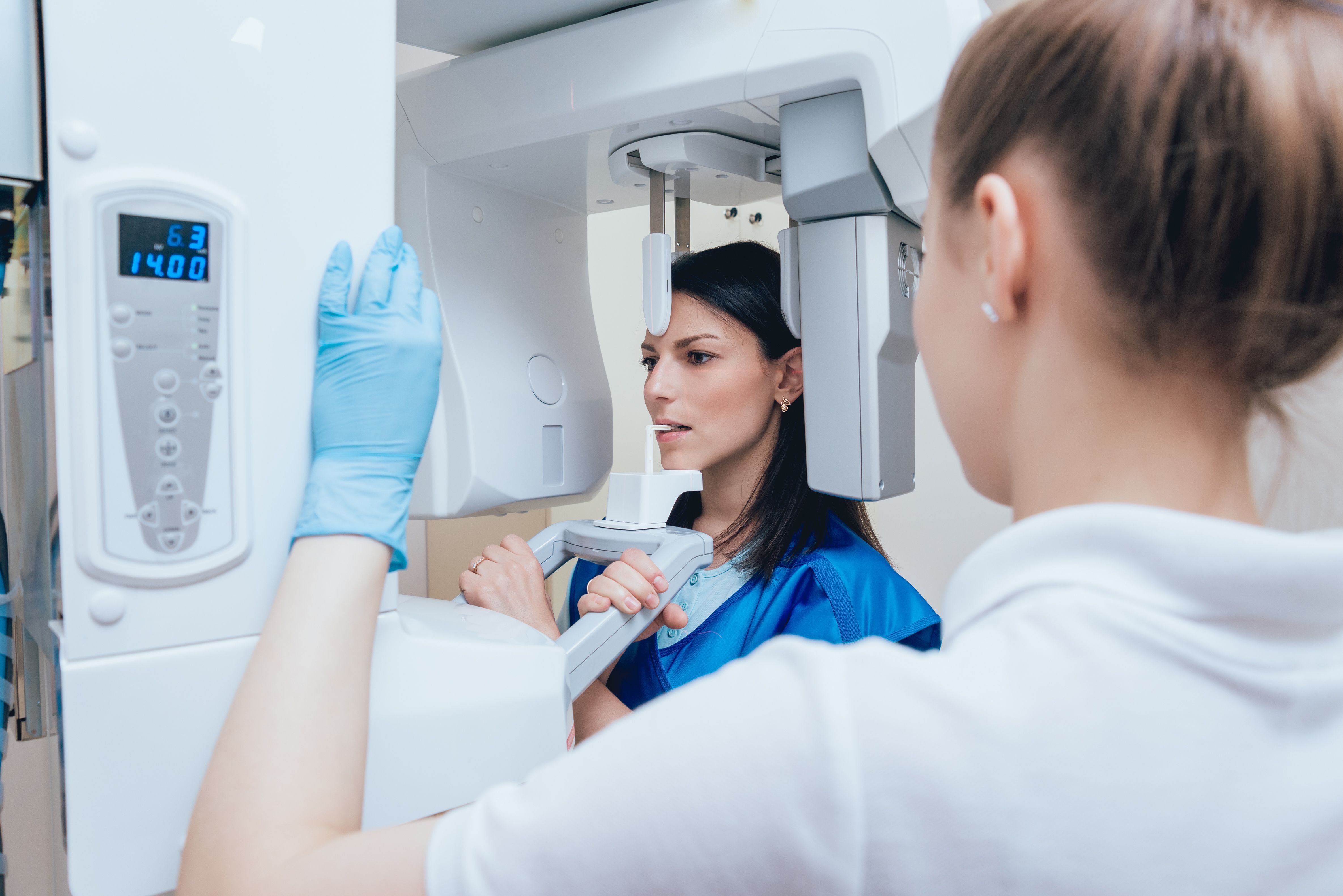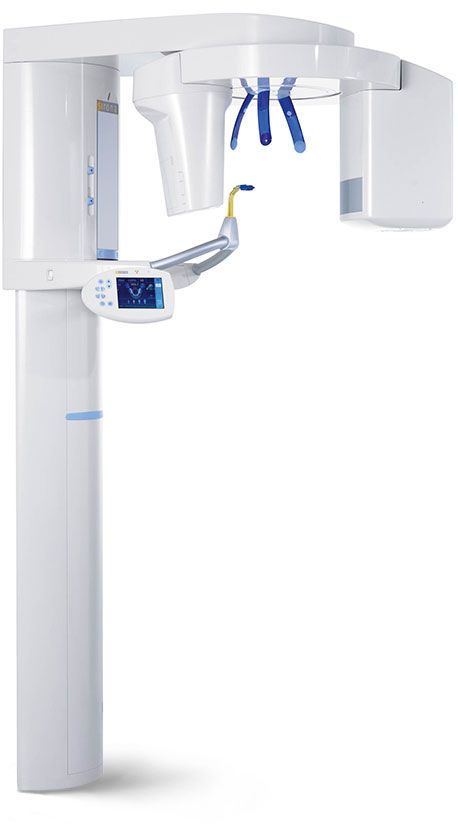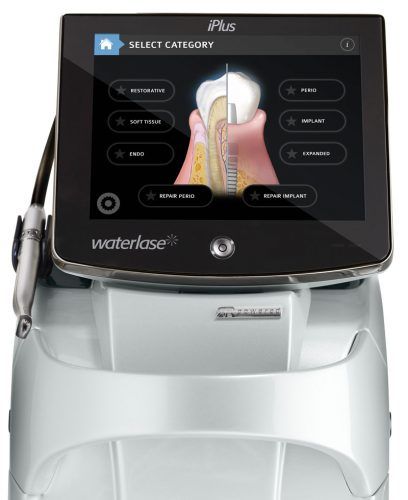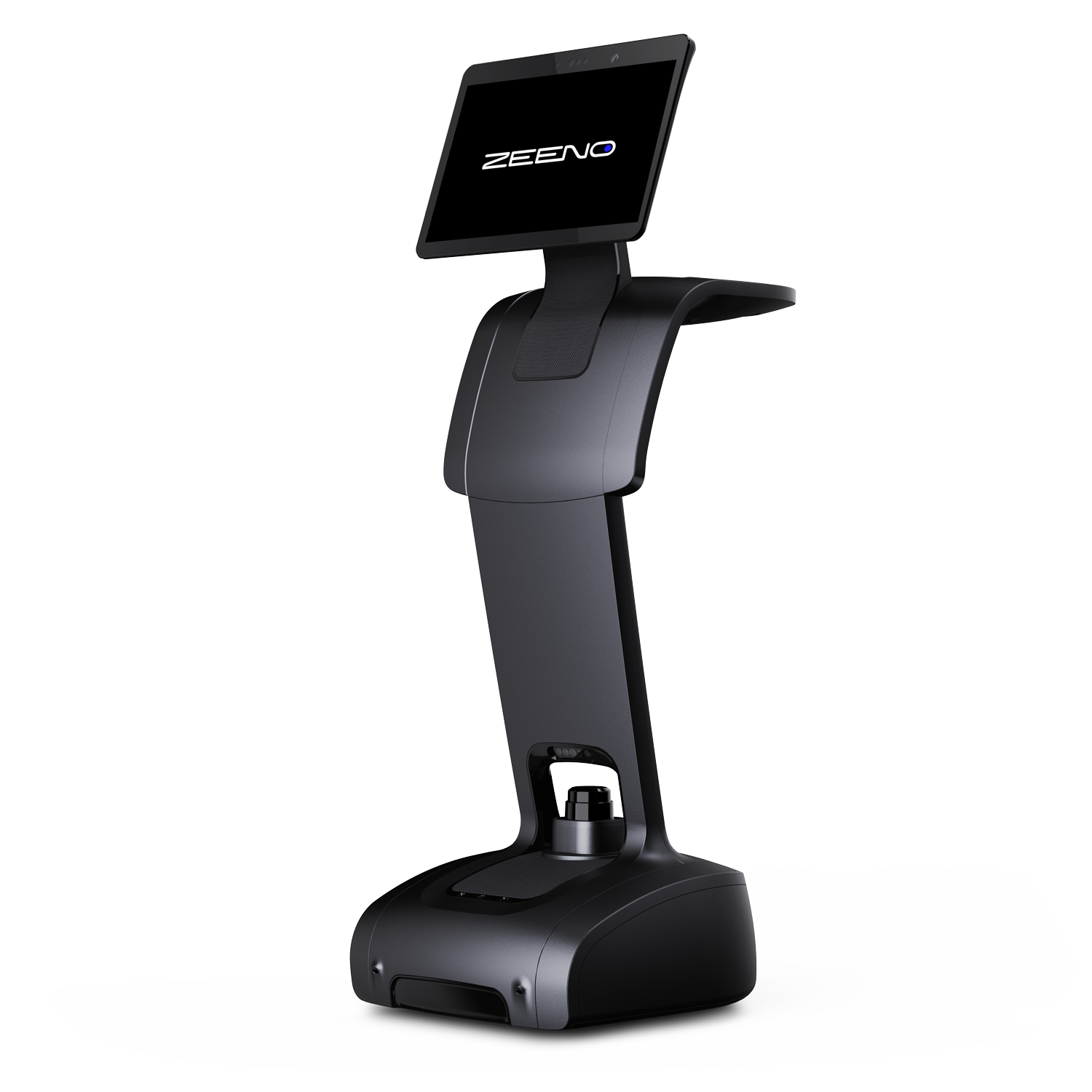Tell Patients About Your Practice’s New Technology: Best Marketing Strategies
It is critical to show off your investments and to do so effectively.

The technology in which you invest says a lot about your practice and what is important to you as a clinician. Keeping your practice updated with the latest advancements shows you care about the patient experience and want to offer the best care possible. You are a modern dentist who is focused on efficiently providing high-quality care, saving your office and your patients time, and detecting issues early to minimize pain and treatment costs.
Technology can be a real practice differentiator, but only if current and potential patients know about it. That means you and your team need to spend time educating patients chairside about the technology you offer, as well as finding ways to get the word out to the rest of your community. When you do, you will find higher case acceptance and more new patients visiting your practice each month.
Too often, the technology in which dentists invest stays tucked away behind closed doors, says Gauri Mona Patel, DDS, a general dentist at Bayshore Dental in Whitefish Bay, Wisconsin. She makes a point of putting her technology front and center, so when patients walk to the operatory for an appointment, they see her Dentsply Sirona Orthophos XG 3D cone beam computed tomography unit (CBCT), Primescan digital scanner, and CEREC CAD/CAM on display, along with her 3D printer from SprintRay. She even has her sterilization unit out for all to see, as it shows her commitment to infection control and patient safety. An integrated digital workflow Dr Patel is especially proud of is her SureSmile Clear Aligners orthodontic treatment, in which she uses her Primescan and CBCT to capture records in 10 minutes during a consult.
Gauri Mona Patel, DDS keeps her technology front and center in her practice in Whitefish Bay, Wisconsin, including the Orthophos XG 3D CBCT unit from Dentsply Sirona.

Technologies that make digital imaging and scans possible are impressive, but they also help dentists provide better patient education. Showing patients digital images gives them a much better idea of what is going on in their mouths, Dr Patel says. That leads to more confidence in the dentist and the diagnosis—making them more likely to pursue treatment and to refer your practice to family and friends.
“These tools help us provide better care,” she says, “so why not share that with patients and show them our thought process? We put a lot of financial investment, time, and training into technology, and it’s important that patients see our commitment to incorporating a digital workflow and providing them with a better experience.”
Talking Tech Chairside
There are many opportunities to talk about technology with patients during their appointments; you just need to determine which approach works best for you.
Dr Patel suggests taking new patients on an office tour during their first appointment, using the opportunity to point out various technologies and review their benefits. For example, if you offer CAD/CAM, talk about the fact that you can produce a crown in about an hour, eliminating the need for multiple appointments. During the examination, hygienists should show patients any technology being used and explain why, reinforcing the benefit it provides.
Russell Morrow, DDS, who practices at Black Mountain Dental Care in Cave Creek, Arizona, and is the chief dental officer for BIOLASE, Inc, uses a variety of technologies including CBCT, 3D printers, and the Waterlase dental laser from BIOLASE. He talks about technology when reviewing treatment plans and describing procedures to patients. He will let them know which technology will be used and why, and often shows short videos that give patients a better understanding of the benefits and what to expect during the procedure.
“I help patients discover they have a need they didn’t know they had before they saw me,” Dr Morrow says. “You have to get to the point they know you care or there’s no reason to present any treatment. They have to identify their own problem. When they do that, they’ll ask, ‘How can we fix it?’ Then I bring in the technology.”
Black Mountain Dental Care in Cave Creek, Arizona, uses a variety of technologies including the Waterlase dental laser from BIOLASE.

If a patient has a cavity, Dr Morrow might say he can fix it quickly, without pain, using laser technology. He will also explain the consequences of not going forward with treatment, which in this case could be a broken tooth and more pain. He spends time reviewing the benefits of treatment and how the technology he uses helps patients avoid unwanted consequences.
Although every scenario is different, Todd Snyder, DDS, FAACD, FIADFE, ASDA, ABAD, a lecturer and cosmetic dentist at Aesthetic Dental Designs in Laguna Niguel, California, tends to talk with patients about technology just before using it during an exam. For example, when he uses the DEXIS CariVu from Kavo Dental and The Canary System from Quantum Dental Technologies, he lets patients know he has diagnostic tools that allow him to find and quantify caries early so he can address problems with a minimally invasive approach. He explains that radiographs make it possible to extrapolate images onto a computer screen so he can see things from a different viewpoint that might help influence his diagnosis, and artificial intelligence (AI) might give him additional information.
If Dr Snyder discovers a procedure is necessary, he will let patients know about the technology that allows him to do it better. Lasers, for instance, make it possible to complete procedures more efficiently while patients experience less pain. All this information prepares patients for the appointment, he says, and helps to ease concerns about the procedure.
John Flucke, DDS, chief dental editor and technology editor of Dental Products Report® who practices in Lee’s Summit, Missouri, also talks with patients about the technology he uses at new patient exams, including the CamX Spectra Caries Detection Aide from Air Techniques and Pearl AI x-ray analysis software. He wants patients to know from the beginning that his practice is committed to being as conservative as possible. He will also talk about the technology during restorative appointments, letting patients know what he is using and how it might make the experience different (and better) than previous appointments.
Todd Snyder, DDS informs his patients at his Laguna Niguel, California practice, that he has diagnostic tools that allow him to find caries early, including the DEXIS CariVu from KaVo Dental.

The team takes 3D scans of every patient who comes in for a hygiene appointment using an iTero digital impression system, Dr Flucke says, and that provides another opportunity to talk tech. Patients watch as their teeth appear on the screen in real-time, with many impressed by the technology. They can see what the team sees, making it easier to educate them on their condition and the need for treatment. And of course, patients like the fact that the scans are quick and goop-free.
Many patients do not realize just how far dentistry has come and what dentists can do to improve their experience, Dr Flucke says. That is why you should explain it to them. These advances allow quicker treatments and let you diagnose problems earlier when solutions are easier—and less expensive.
“We routinely have patients that come in with small areas of decay that we can restore using a laser or air abrasion,” Dr Flucke says. “Last week I did a filling on a patient that took about 15 minutes, and the patient said, ‘I can’t believe it was that simple and easy and I didn’t have to get numb.’ When people make comments like that, that’s when I get into the tech of what we’re doing and why it’s a benefit for them. It’s not just bells and whistles; it really is good for the patient.”
Once you invest in technology, do not wait; introduce it to patients immediately, especially if it is something they will be interacting with, says Matthew Brignoni, business development manager for Zeeno Robotics. Technology such as the Zeeno Robot is an extension of your team, for example, and can help streamline your workflow. The autonomous robot can greet patients and take them back for their appointment or deliver supplies from one operatory to another. Patients will see it moving around the practice and wonder what it does. Let them know what to expect during their first visit and how it benefits them, beyond just being cool. Generate buzz and they will talk about the new robot or any other technologies you take the time to show off, to family and friends—and that will help attract patients to your practice.
It is also OK to talk about the office vision for purchasing technology, says Lisa Thompson, CDA, RDA, CDIPC, manager, clinical services, for Midmark Corporation. If you are planning to purchase a 3D imaging unit like the new EOIS 3D from Midmark in the next 6 months or so, for example, tell patients about your plans and how the investment will elevate the level of care, such as providing high-quality images for better diagnosis and clinical outcomes.
“When you’re introducing the technology, emphasize the benefit it brings to the patient,” says Robert Kolts, DDS, MBA, head of the customer experience at Overjet, noting many doctors use Overjet’s AI technology to encourage co-diagnosis and patient engagement.
A Team Effort
Before Dr Morrow even steps into the room, his team has talked with patients about what was found during the exam and the technology used. They have explained everything that happened during the appointment, serving as an extension of the doctor so he has more time to talk with patients about treatment.
For example, the hygienist might highlight an area on a scan that shows extra gum tissue around the tooth. After pointing it out, the team member tells the patient that Dr Morrow can remove it using a laser, describing it as an advanced technology that allows for a quick, painless procedure. Dr Morrow then comes in and spends time answering any patient questions about the procedure, emphasizing the benefit. This allows him to move quickly, and to spend more time addressing concerns patients have.
The Zeeno Robot is a patient-facing unit that can greet patients, escort patients to the operatory, carry instruments, and even play educational videos and music.

Dr Morrow’s team uses weekly meetings and morning huddles to run through role-playing exercises to prepare for any situation.
Creating a unified message through training is critical, Dr Patel says, adding that her team members do a lot of talking for her. The hygiene team takes intraoral photos and shows patients their perio condition or plaque levels, for example, giving patients a good idea of what is going on before she even sees them. The front desk can talk about the benefit of scheduling a CBCT scan and go over insurance, while the assistants and hygienists can explain imaging technology and the critical information it provides chairside—with Dr Patel later reinforcing that message.
It is not just team members who need training—dentists do too, Thompson says. If dentists are not trained in using and discussing the technology, chances are their team members will not be, either.
Thompson recommends ensuring the technology in which you invest has good manufacturer education attached to it, as well as planning team training days for everyone to learn and keep their skills up-to-date. This helps ensure team members can communicate properly with patients.
When Dr Patel incorporates a new technology into her office, she introduces it to her team during their daily huddle or monthly meetings. She walks them through the benefits, the cost for patients, and why she has decided to add it to the office.
“Once everyone understands what the technology does, we discuss how to explain it to patients and come up with a concept of what we want to get across,” says Dr Snyder, who also uses team meetings to get members up to speed. “Everyone uses their own words based on that concept. We all highlight what we’re doing and why and how that helps the patient as opposed to just treating someone, and that makes us stand out.”
Many companies, like Overjet, include scripts in their training, Dr Kolts says. Having a script to reference can make team members feel more comfortable talking about new technology and will ensure everyone stays on message.
Once team members are trained in using new technology, Dr Flucke reinforces it. He might take a few minutes during the morning huddle to remind team members to use the new caries detection device, for example. He will also point things out to patients. If the decay shown on an x-ray is detected by AI, he will tell patients and ask whether they have questions about how it works. His team members, whom he describes as good communicators, are trained to do the same.
Another way to get team members to effectively talk about new technology to patients: Show how it positively impacts them, Brignoni says.
“You need to build excitement with your staff and show them you’re investing in the technology not only for the patient but also to benefit them,” Brignoni says. “You also have to be consistent in your meetings. Touch on technologies like Zeeno and remind team members what you’re doing to make your practice cutting-edge. It shows your practice is not only a great place to work, but you’re also investing in the coolest technology to make their job easier and your patients happier.”
Getting the Word Out
Of course, you want to create buzz about your practice in the community, and that means marketing the new products and technologies you offer. One of the best places to start is your website. How? Add a page that features all your state-of-the-art technology, says Beth Gaddis, director of content marketing for Overjet.
Taking advantage of social media is also necessary. Dr Patel suggests posting before and after images as well as 3D and 2D scans of the same patient, side by side. This is “eye-opening” for patients, she says, as many do not realize there is such a big difference.
“You should start telling patients about the technology you offer before they even walk in,” Thompson says. “It should be on your website and in your newsletters, blogs, and podcasts. Explain how the technology helps with treatment whenever you’re communicating with patients.”
If you have a technology like a Zeeno robot, Brignoni recommends posting images and videos of patients interacting with it on social media to generate buzz. Potential patients will see the cool new technology and want to learn more, maybe even prompting them to make an appointment.
Doctors who post videos on social media platforms tend to stand out, especially with younger patients, Thompson says. These videos might show a day in your office, one of your team members using technology, or the introduction of technology you recently purchased.
“Videos become very advantageous because so many doctors don’t want to do them,” Dr Snyder says. “So, it instantly sets you apart. I’m a huge believer in social media to put things out there for the world to see what differentiates you.”
TV and radio spots, magazine ads and articles, and podcasts are other ways to get the word out about your technology, Dr Snyder says. He also likes to speak at local events, such as Rotary, Kiwanis, and chamber of commerce meetings. These organizations are always looking for speakers, and you can use the 15-minute time slot to promote your innovative technology.
Asking happy patients to write reviews also will help create publicity, Gaddis says. You can share reviews on your website and social media channels. She also suggests sending an email highlighting innovative technology with a link for scheduling an appointment to your patient base and putting signage in your practice promoting new offerings.
Remember to let referring doctors and peers know about recent technology investments, Brignoni says. One way to do that is through email blasts. This sets you apart, making it more likely for other clinicians to refer patients to your practice, but it also encourages others in the area to follow your lead.
Improving Education, Case Acceptance
Educating patients about the technology you offer also can help boost case acceptance. They will know you are trying to provide better care and will put more trust in you and your team.
“Perception is a big component to case acceptance,” Dr Snyder says. “If you have technology that allows you to fix the problem quickly and it’s not as invasive, and if you’re weaving that into the conversation, it can bolster their mindset and reassure them that they’re in the right place and getting the right care. It builds value and sets you apart.”
Digital scans and images are also powerful, Dr Patel says. They help patients understand what is going on in their mouths, giving them more confidence in your diagnosis and recommendations for treatment.
If you take a CBCT scan of a patient considering implants, for example, and explain the technology and what it shows you, patients understand you are using state-of-the-art tools, Dr Flucke says. They can see your investment and the difference it can make for their treatment.
Technologies like Overjet AI can change the way you present treatment, again providing patients with a deeper understanding of their condition, leading to case acceptance.
“Instead of just telling them what I see, this shows them what is happening in their mouth. It improves the patients’ understanding and makes them more comfortable asking questions and having a conversation about their health,” says Brandon Ryff, DDS, the owner of Scottsdale Smile Center in Paradise Valley, Arizona, who implemented Overjet’s AI last summer. “I can even pull up radiographs from past visits and compare them with the new radiographs to determine if there are any changes. This has blown people away. I’ve had countless patients thank me for investing in this technology to keep them healthy.”
Leveraging AI also shows patients your recommendations are based in science, Dr Morrow says.
“I use a digital AI program to help with caries detection, and when it pulls up on the screen, patients realize it’s not just me being subjective, it’s me being objective,” he says. “We’re co-discovering issues. If there’s a cavity, it shows up colored on the x-ray. And if AI is saying it, they believe it. It takes my opinion out of it.”
Maximize Your Technology
There are plenty of technologies dentists can integrate into their practice to elevate patient care. From CAD/CAM to intraoral scanners to 3D printers to AI software, the list keeps going.
A lot goes into adding technology to a practice. You invest time in researching its benefits and finding the best option for your office. You must train yourself and your team to use the technology, and, of course, you must make the financial investment. Do not let all that time, money, and energy go to waste.
You must educate patients about how the technology allows you to be more efficient, shortening procedure times, catching problems before they require more expensive treatment, or simply making patients more comfortable during appointments. Show patients you have invested in technology for their benefit, and you will earn their confidence, loyalty, and referrals.
“Patients are incredibly savvy these days,” Thompson says, “and they want to know their provider can handle any situation that might come up. They want to know the latest technology is there for them and any of their future needs.”